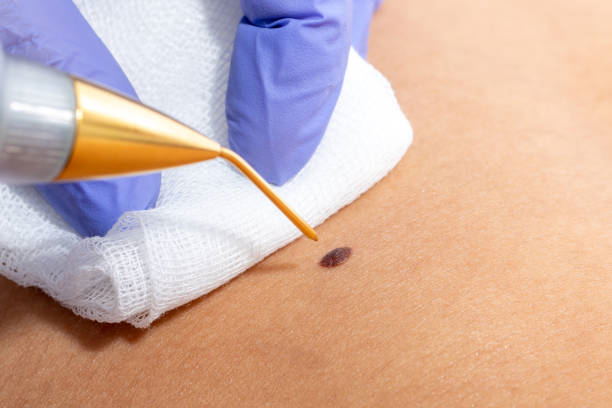Cryosurgery – Cryotherapy in Riyadh are increasingly gaining popularity as effective treatment options for various skin conditions and cosmetic enhancements. In Riyadh, advancements in these techniques have made them more accessible to those seeking innovative solutions for skin health and appearance. This blog will delve into the science behind cryosurgery and cryotherapy, the procedures involved, their benefits, potential risks, and what you should know before opting for these treatments.
Understanding Cryosurgery and Cryotherapy
What is Cryosurgery?
Cryosurgery is a medical procedure that uses extreme cold to destroy abnormal tissues. This technique is commonly used to treat various skin lesions, including warts, moles, and precancerous spots. By freezing the targeted tissue, the procedure promotes controlled cell death, allowing for the removal of unwanted skin growths while minimizing damage to surrounding healthy tissue.
What is Cryotherapy?
Cryotherapy, on the other hand, refers to a broader range of treatments that utilize cold temperatures to promote healing and enhance skin appearance. This can include localized cryotherapy for specific areas or whole-body cryotherapy, which involves exposing the entire body to extreme cold for short durations. Cryotherapy can aid in reducing inflammation, improving circulation, and rejuvenating the skin.
The Mechanism of Cryosurgery
How Cryosurgery Works
Cryosurgery utilizes liquid nitrogen or argon gas to achieve extremely low temperatures. The process involves several steps:
- Preparation: The area to be treated is cleaned, and a topical anesthetic may be applied to minimize discomfort.
- Freezing Process: A cryoprobe or spray is used to apply the freezing agent directly onto the targeted tissue. The temperature typically drops to around -20°C to -30°C.
- Tissue Reaction: The cold temperature causes ice crystals to form within the cells, leading to cellular damage. The body’s immune system then works to remove the damaged tissue over the following days and weeks.
- Healing and Recovery: After treatment, the skin may appear red and swollen, but this is a normal part of the healing process. The treated area will gradually heal, often revealing smoother, healthier skin.
Advantages of Cryosurgery
- Precision: Cryosurgery allows for targeted treatment, minimizing damage to surrounding healthy tissue.
- Minimally Invasive: This procedure does not require incisions, reducing recovery time and the risk of complications.
- Quick Recovery: Most patients can return to their daily activities shortly after the procedure.
The Benefits of Cryotherapy
Health Benefits
Cryotherapy has gained attention not only for its aesthetic benefits but also for its therapeutic properties. Key benefits include:
- Reduced Inflammation: Cold exposure can help decrease inflammation in the body, providing relief from various conditions, including arthritis and muscle soreness.
- Enhanced Circulation: The body’s response to cold can improve blood circulation, delivering essential nutrients and oxygen to tissues.
Aesthetic Benefits
Cryotherapy can also enhance skin appearance and health. Here’s how:
- Skin Rejuvenation: The cold stimulates collagen production, which can help improve skin elasticity and reduce the appearance of wrinkles.
- Improved Skin Tone: Cryotherapy can promote a more even skin tone by reducing redness and hyperpigmentation.
Potential Risks and Considerations
Safety of Cryosurgery
While cryosurgery is generally safe, there are some potential risks and side effects to consider:
- Skin Irritation: Some patients may experience temporary redness, swelling, or blistering at the treatment site.
- Hypopigmentation: In rare cases, the treated area may become lighter than the surrounding skin.
Safety of Cryotherapy
Cryotherapy is also considered safe for most individuals, but it may not be suitable for everyone. Potential risks include:
- Frostbite: Prolonged exposure to extreme cold can lead to frostbite if not done correctly.
- Respiratory Issues: Whole-body cryotherapy may not be advisable for individuals with certain respiratory conditions.
What to Expect During Treatment
Preparing for Cryosurgery
Before undergoing cryosurgery, it’s important to have a consultation to discuss your medical history, skin type, and treatment goals. During the consultation, the practitioner will evaluate the area to be treated and outline the procedure's details.

What Happens During Cryotherapy?
During a cryotherapy session, you can expect:
- Assessment: A thorough assessment of the skin area to determine the appropriate treatment method.
- Cold Application: Depending on the treatment type, localized or whole-body cryotherapy will be applied for a specific duration.
- Post-Treatment Care: After the session, you will receive aftercare instructions to ensure optimal healing and results.
Aftercare and Recovery
Post-Cryosurgery Care
Following cryosurgery, proper aftercare is essential for optimal healing. Recommendations may include:
- Keep the Area Clean: Gently clean the treated area with mild soap and water to prevent infection.
- Moisturize: Apply a soothing moisturizer to keep the skin hydrated.
- Avoid Sun Exposure: Protect the treated area from direct sunlight until it has fully healed.
Post-Cryotherapy Care
After a cryotherapy session, consider the following:
- Stay Hydrated: Drink plenty of water to support the body’s recovery processes.
- Monitor Skin Response: Watch for any adverse reactions and report them to the practitioner if necessary.
Conclusion: Making an Informed Decision
In conclusion, cryosurgery – cryotherapy in Riyadh offers innovative solutions for skin health and cosmetic concerns. Understanding the science behind these treatments can empower you to make informed decisions about your skin care options. Whether you are considering cryosurgery for skin lesions or exploring cryotherapy for overall skin rejuvenation, it is essential to consult with experienced practitioners who can guide you through the process.
